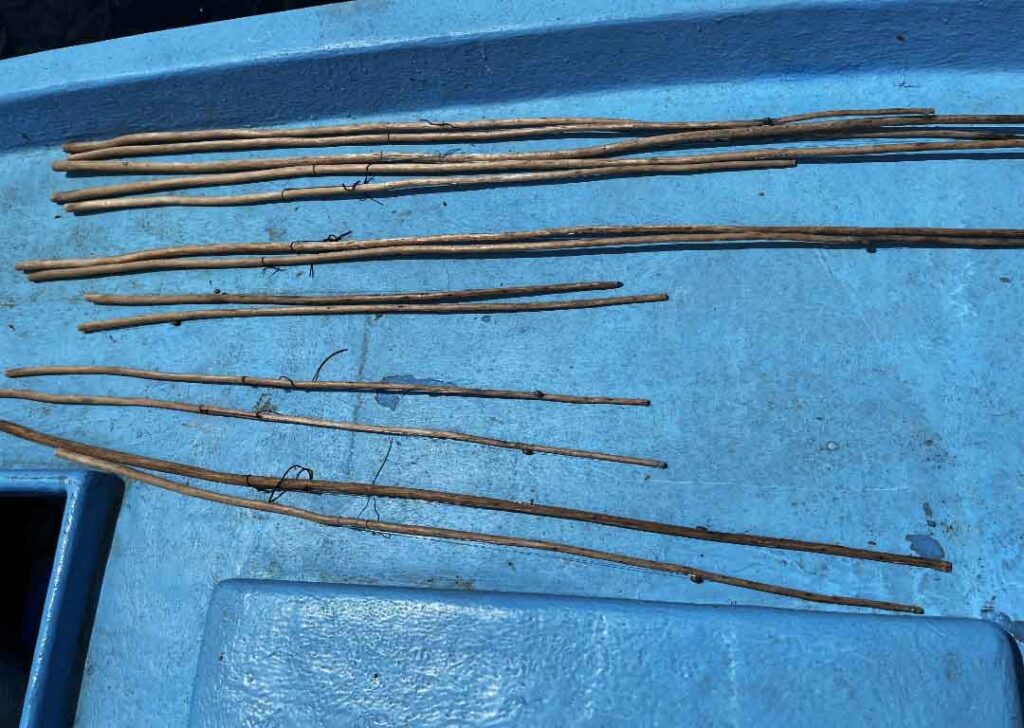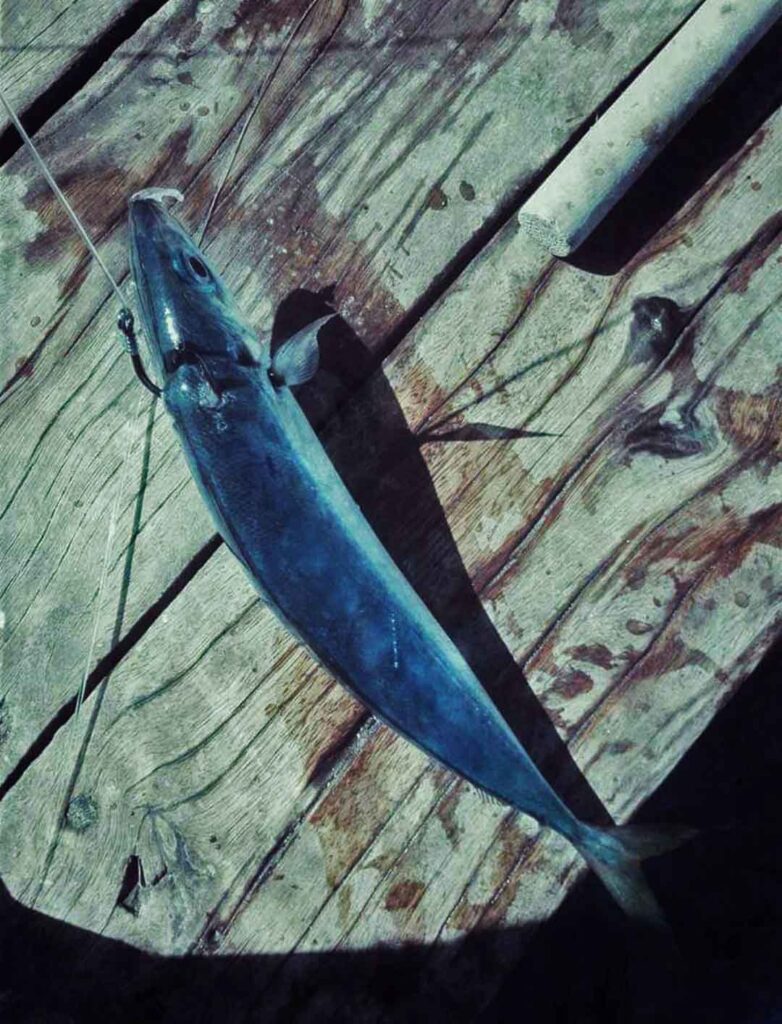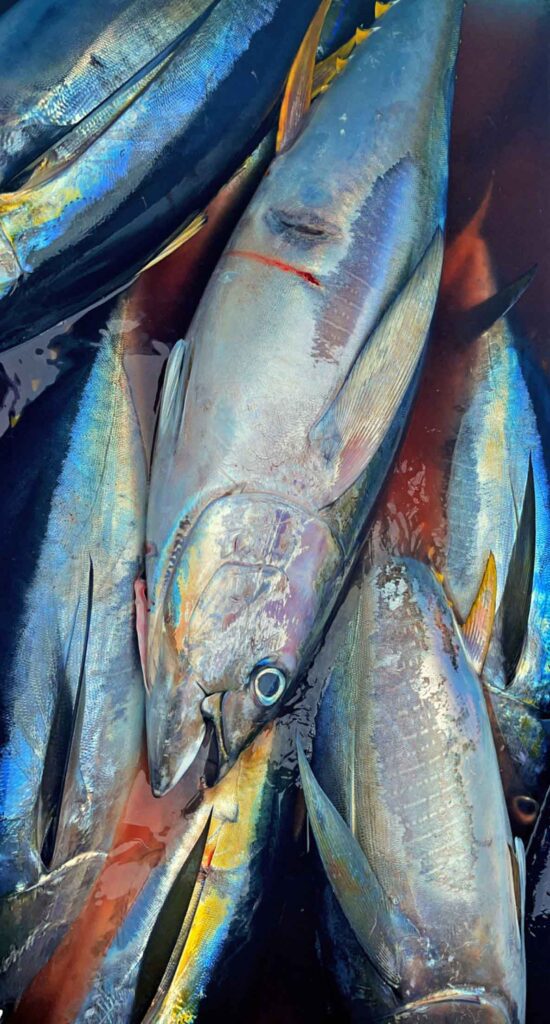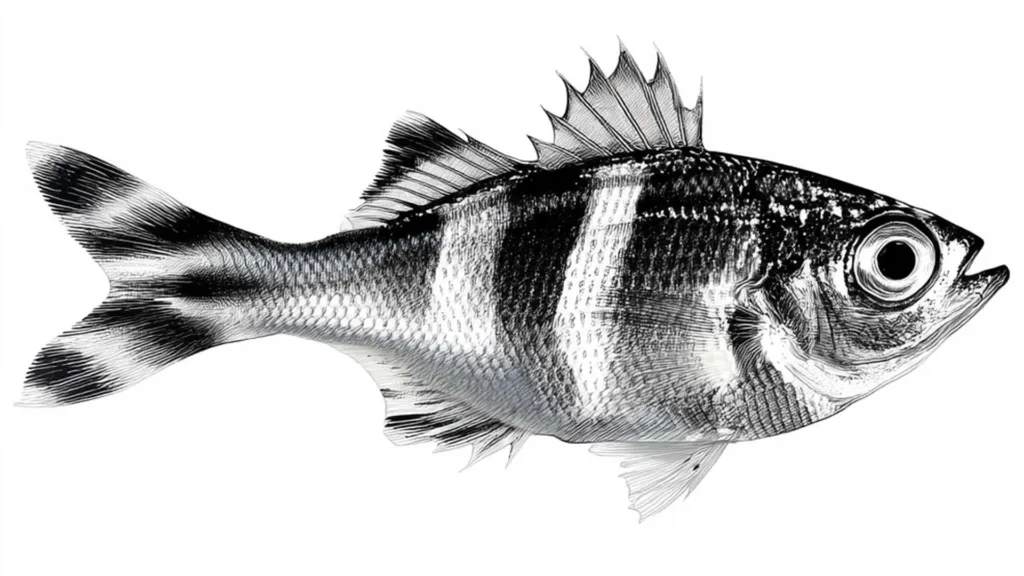
Ahmed Firaq (Obei), Ahamadhkalo, the brilliant and adventurous fisherman, and I usually go for yellowfin tuna. We set out on our adventure with Ahamadhkalo as our sole guide. If the flying fish season is not in effect, we will attempt to catch some bait fish to entice these speedsters. If bait fish are present at the reef edge, we will begin by catching the famed bait fish mackerel scad (Rimmaha). This makes an excellent bait for catching yellowfin tuna. Usually, we go to the Geimiski Fanno area, which is a beach area at the northern end of Fuvahmulah. When the dhoani reaches the destination, the engine will be turned off.
Ahamadhkalo would put on his snorkel mask and dive into the sea. He’d ask us to provide bait chum. He would grab a bunch of bait stuff and dive into the water. To spread the chum, he would go down, about 10 feet below the dhoani. Then he would rise to the surface, placing one of his palms on the dhoani. He would look through his mask for any signs of bait fish. If mackerel scad were available, he would request that we provide bait rods in two sizes—one around two feet and the other around three feet in length. We will use the long rods if the bait fish are a little deeper below the dhoani. The small rods will be used to catch the bait fish if they are not too deep.

There are approximately five little rods and five large rods with barbless hooks attached to a thin monofilament weighing about 15 pounds. When he successfully landed a fish, he would give us that rod to attach the bait. We had baited all of the rods before he jumped in. When he spotted a bait fish, he’d tell us to hand over the rods. He would tell us to give him either the short or long rod, based on how deep he thought the bait fish were. It is a quick operation because the scads will soon flee the area. Within 30 minutes, he would have landed roughly 40-60 scads. We go farther away to catch yellowfin tuna after we’ve caught enough scads.

“Can you see any birds?” Ahamadhkalo would ask us. He would accelerate the dhoani to reach the area if we saw birds. Then he would ask us to throw one or two live baitfish into the water. He would hook a live bait fish through its back. We use round hooks and 90, 100, 120, or 150 lb monofilament line. If the fishermen are highly experienced and talented, they may utilize 90 or 100 pounds. They will release the baitfish deep into the ocean.
The bait fish would move away from the dhoani. On the monofilament, if we’re lucky, we will feel the scad swallow it. If we observe the yellowfin striking or suckling the bait, we allow it to persist in its consumption to ensure a hook-up. The monofilament feels a huge force. The yellowfin that was hooked would swim away. We need to make sure the line stays tight. This keeps the fish from pulling the hook out. Some people purposely wait longer for the bait to be taken. The key here is to not give too much time, as the line will be too slack when the yellowfin bites or swallows the bait. Make sure the line is tight.

We often have to release 120 meters of monofilament since the torpedo-shaped speedster swims like a rocket. This long run will leave you fatigued. It is a grueling battle. The fish will be weary after the blind run. Then it’s time to bring it up. There have been times when fishermen were pulled into the water by these big yellowfins because they got the fishing line caught on their hands while letting them go on this dangerous run. I will compose separate articles regarding these interactions.
The benefits of live baiting are its adaptability and its natural ability to attract yellowfin. This approach can be used at varying depths. Yellowfin can be seen throughout the water column. As I mentioned at the start of the post, when bait fish are not active on the surface, this technique will tell us if yellowfin are holding at specific depths. This is their natural prey. The benefit of this technique is that you’re utilizing live bait, which creates a more natural presentation. A live baitfish’s swimming movement and vibration activates their predatory instincts. This method will work well if artificial lures aren’t working to catch a tuna.






